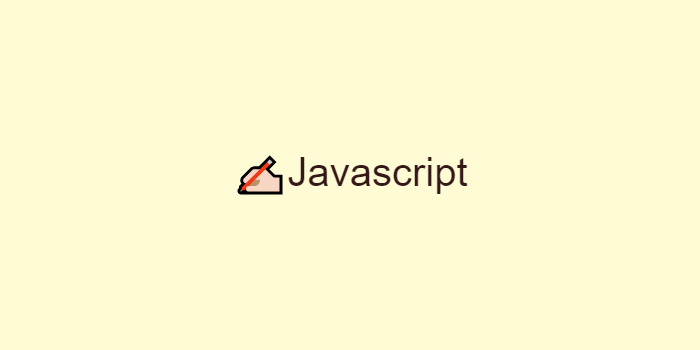
Array 메소드 연습
드림코딩의 자바스크립트 9. 유용한 10가지 배열 함수들. Array APIs 총정리 강의를 통해 Array 메소드를 연습한 과정을 기록해본다🤯 먼저 혼자 풀어보고, 영상 속 풀이와 비교해보는 식으로 공부했다.
- 이 글에서 사용한 메소드 종류
toStringjoinsplitsortreversefilterspliceslicefindfindIndexmapsomereduce
Q1 ~ Q4
Q1. make a string out of an array
const fruits = ['apple', 'banana', 'orange'];
// #1
console.log(fruits.toString());
// #2
const answer = fruits.join();
console.log(answer);
// "apple,banana,orange"toString() VS join()
참고자료
array의 아이템을 string으로 바꾸는 방법으로toString()과join()을 사용했는데,
- 사실
toString()은 Array만의 메소드가 아니다.toString()은 객체에도 쓸 수 있고, value가 콤마(,)에 의해 분리된다.join()은 Array에 대해서만 쓸 수 있는 메소드이며, 기본적으로 콤마(,)에 의해 분리되지만 두번째 매개변수를 적어 seperator를 원하는 것으로 지정할 수 있다.
Q2. make an array out of a string
const fruits = '🍎, 🥝, 🍌, 🍒';
const answer = fruits.split(', ');
console.log(answer);
// ["🍎", "🥝", "🍌", "🍒"]split()
string 값을 array로 만들 때
split()메소드를 사용했다.split()의 2번째 매개변수 limit를 사용하면 다음과 같이 지정한 값만큼의 아이템만 배열로 만들 수 있다.const answer = fruits.split(', ', 2); console.log(answer); // ["🍎", "🥝"]
Q3. make this array look like this: [5, 4, 3, 2, 1]
// #1
const array = [1, 2, 3, 4, 5];
const answer = array.sort((a,b) => b-a);
console.log(answer);
// 원래 배열인 array의 순서도 바뀜
// #2
const answer = array.reverse();
console.log(answer);
// 원래 배열인 array의 순서도 바뀜
// [5, 4, 3, 2, 1]sort(), reverse()
둘 다 원래 배열인 array의 순서도 바꾼다.
sort()로는 내림차순 정렬을 하여 요구조건을 만족했고,reverse()로는 순서를 뒤집어 요구조건을 만족했다.
Q4. make new array without the first two elements
const array = [1, 2, 3, 4, 5];
// #1
const answer = array.filter(item => item>=3);
console.log(answer, array);
// (3) [3, 4, 5] (5) [1, 2, 3, 4, 5]
// array는 변하지 않는다.
// #2
const answer = array.splice(2,3);
console.log(answer, array);
// (3) [3, 4, 5] (2) [1, 2]
// array가 변형됨
// #2-1
const answer = array.splice(0,2);
console.log(array, answer);
// (3) [3, 4, 5] (2) [1, 2]
// array가 변형됨
// #3
const answer = array.slice(2);
console.log(answer, array);
// (3) [3, 4, 5] (5) [1, 2, 3, 4, 5]
// array는 변하지 않는다.filter(), splice(), slice()
splice()는 array에 변형이 생기지만filter()와slice()는 array는 변하지 않고 answer이라는 새로운 배열을 만들어 요구조건을 만족했다.
Q5 ~ Q11
문제용 데이터
class Student {
constructor(name, age, enrolled, score) {
this.name = name;
this.age = age;
this.enrolled = enrolled;
this.score = score;
}
}
const students = [
new Student('A', 29, true, 45),
new Student('B', 28, false, 80),
new Student('C', 30, true, 90),
new Student('D', 40, false, 66),
new Student('E', 18, true, 88),
];Q5. find a student with the score 90
// #1
const answer = students.find((student) => student.score === 90);
console.log(answer);
// #2
const index = students.findIndex((student) => student.score === 90);
console.log(students[index]);
// Student {name: "C", age: 30, enrolled: true, score: 90}find(), findIndex()
score가 90인 student를 찾기 위해
- 콜백함수의 조건을 만족하는 첫번째 요소의 값을 반환하는
find()메소드를 쓸 수도 있고,findIndex()로 인덱스를 찾아서 그 인덱스로 배열 안의 특정 요소를 출력할 수도 있다.이 문제에서는 첫번째 방법이 더 간편하다.
Q6. make an array of enrolled students
const answer = students.filter((student) => student.enrolled === true);
console.log(answer);
// (3) [Student, Student, Student]filter()
콜백함수가 진행하는 테스트를 통과하는 요소들만 모아서 새로운 배열로 반환하는 것이기 때문에,
=== true는 생략할 수 있다.
Q7. make an array containing only the students' scores.
result should be: [45, 80, 90, 66, 88]
const answer = students.map(student => student.score);
console.log(answer);
// [45, 80, 90, 66, 88]map()
map()메소드는 배열 안에 들어있는 모든 요소를 콜백함수를 통해 가공하여 그 리턴값으로 대체하는 것이다. 이 문제에서는 student의 score로 대체한 것이다.
Q8. check if there is a student with the score lower than 50
const answer = students.some(
student => student.score <50
);
console.log(answer);
// truesome()
some()메소드는 배열 검색의 일종으로, 배열 안의 요소 하나라도 (or) 콜백함수를 통과하는지 판단한다. 하나라도 통과하면true를 반환한다.
Q9. compute students' average score
const answer = students.reduce(function(prev,curr){
return prev + curr.score;
}, 0);
console.log(answer / students.length);
// 73.8 reduce()
콜백함수가 배열안의 모든 요소에 대해 호출되며 누적된 값을 리턴한다.
const answer = students.reduce(function(prev,curr){ console.log('--------------------'); console.log(prev); console.log(curr); //를 통해서 리턴된 값이 다음 순서의 prev가 된다는 걸 알 수 있다. }); -------------------- Student {name: "A", age: 29, enrolled: true, score: 45} Student {name: "B", age: 28, enrolled: false, score: 80} -------------------- undefined Student {name: "C", age: 30, enrolled: true, score: 90} -------------------- undefined Student {name: "D", age: 40, enrolled: false, score: 66} -------------------- undefined Student {name: "E", age: 18, enrolled: true, score: 88}
Q10. make a string containing all the scores.
result should be: '45, 80, 90, 66, 88'
// #1
const answer = students.map(student=>student.score);
console.log(10, answer.toString());
// #2
const answer = students
.map(student=>student.score)
.join();
console.log(answer);
// "45,80,90,66,88"함수적 프로그래밍 : 여러 메소드를 함께 적기
#2 풀이와 같이 map()과 join()을 한번에 적는 것을 함수적 프로그래밍이라고 한다. 가독성이 높아져 #1 풀이보다 #2 풀이처럼 작성할 것이 권장된다.
Q11. do Q10 sorted in ascending order.
result should be: '45, 66, 80, 88, 90'
// #1
const answer = students.map(student=>student.score);
answer.sort((a,b)=>a-b);
console.log(answer.toString());
// #2
const answer = students
.map(student=>student.score)
.sort((a,b)=>a-b)
.join();
console.log(answer);
// #3
const answer = students
.map(student=>student.score)
.sort((a,b) => a-b)
.toString();
console.log(answer);
}
// "45,66,80,88,90"sort()
콜백함수의 값이 음수냐, 양수냐, 0이냐에 따라 배열의 요소를 정렬한다.
- 또한, Q10과 마찬가지로 #2, #3과 같은 함수적 프로그래밍이 권장된다.